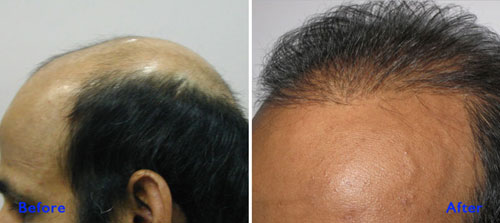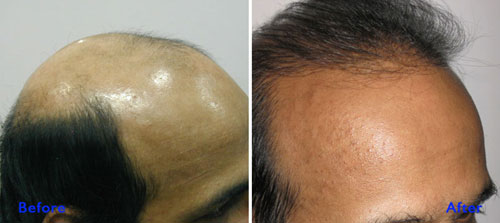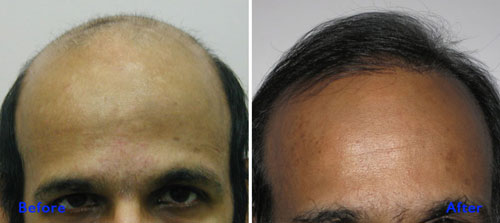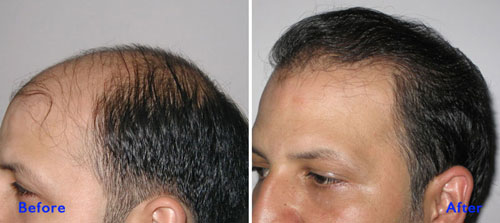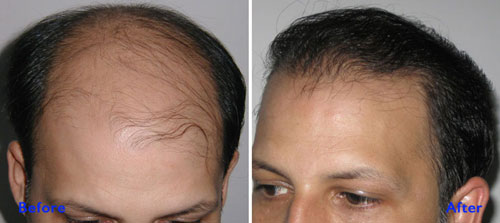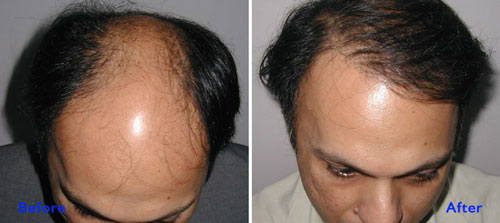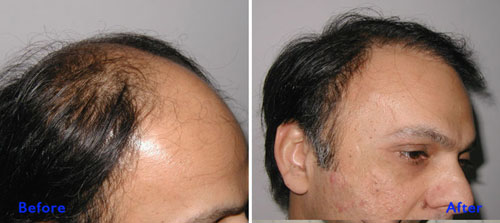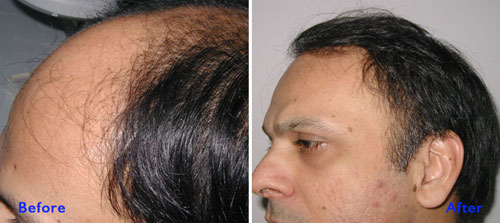Hair Transplant for Men | Hair Transplant for Women is not as well researched by the patients as in most of the other countries. Most of the patients fall for the cheap hair transplant in Pakistan, rather than the quality of the surgery. Consequently, they end up having a less than the optimal result owing to the poor technique, less qualification and mis-judgement of a barely qualified doctor, or even a non-doctor wig specialist – sad but true. On this page we will try to answer some of the most frequently asked questions about hair transplant and would try to give you some tips to find the most qualified hair transplant surgeon in Pakistan as well as how to get the best FUE or FUT hair transplant in Pakistan.
What is hair transplant?
In 1952, a dermatologist in New York City, Dr. Norman Orantreich,made the breakthrough invention of hair transplant. Since then Dermatologists have refined and progressed the art and science of hair transplant more than any other single specialty. Dermatologists are the specialists of the skin, hair and nail diseases; they diagnose and treat Hair loss better than any other specialist. Never, ever, decide on your own that you are a candidate for hair transplant. First of all a dermatologist must confirm the cause of your Hair loss. Other than genetic predisposition, Hair loss could, as well, be a consequence of any superficial infection or even an internal disease process. In certain cases, hair can be made to re grow by eliminating the disease causing it.
Our dermatologist and hair transplant surgeon, Dr. Azim Khan has written chapters on Hair loss and Hair loss treatment in the textbooks taught in medical colleges and universities internationally. During your initial consultation for hair transplant in Lahore, you will be thoroughly evaluated for the cause of Hair loss in your particular case.
Hair Transplant for Men | Hair Transplant for Women is a very fine artistic surgery to treat Hair loss that can not be treated with any other Hair loss treatment like medicines or medicinal lotions. In hair transplant surgery, hair is taken out from the back of patients head (from the scalp) and planted on the front balding part of the head or on any other body part where hair is needed. It is primarily used to treat male pattern baldness, whereby grafting hair follicles that are genetically resistant to balding are transferred to the already bald scalp. However, it is also used to restore eyelashes, eyebrows, and beard hair. They are ones own natural hair and grow for the rest of ones life as their other normal hair. The transplanted hair require cutting just like ones other normal hair.
Hair Transplant for Men | Hair Transplant for Women in Lahore | Karachi | Islamabad
Hair Transplant for Men | Hair Transplant for Women has now become the most popular cosmetic surgery procedure for men.There are many options available to get an affordable hair transplant in Pakistan. Horrifically, from a totally unqualified wig-specialist or a barely qualified doctor, to a properly trained and internationally acclaimed skilled cosmetic surgeon who actually specializes in hair transplant – there are many options to choose from. In Pakistan Hair transplant surgery is not strictly regulated by the health ministry, and can be confidently performed by anyone really— qualified or not. You as a patient are advised to thoroughly consider and confirm the credentials of your Hair loss treatment specialist especially when choosing a hair transplant surgeon in Pakistan. Unfortunately, many hair transplant centers in Pakistan also cheat their patients by making false claims of planting more hair, using a particular technique and, much to our surprise, employ funny and ridiculous ways of charging them for every single hair separately. This is done only to camouflage the cost of the hair transplant.
How is the hair transplant performed?
In our US clinics and in Pakistan hair transplant is performed using our state-of-the-art technology and latest techniques of micro hair transplantation with single and follicular unit hair transplant, follicular unit extraction (FUE), or a combination of these techniques as required by the patient.

Only local anesthesia (without the need of general anesthesia) is used to anaesthetize (to put the area to sleep) so that you do not feel any pain. Hospitalization is not required. Patient can resume his routine daily activities immediately after the transplantation. We perform hair transplant in Lahore using the same latest equipment as we use in our US clinics and all the medications used during the surgery are of highest quality and usually imported from United States. The equipment used during the surgery is of the prime importance as this enhances the surgeon’s ability to perform highest quality hair transplant. Surgery usually takes around 5-7 hours. We maintain the highest standards of patient safety, privacy and confidentiality.
Our consultant hair transplant surgeon Dr. Azim Jahangir Khan is the most qualified in Pakistan as far as hair transplantation surgery is concerned. He spent over 15 years in training, practicing and teaching the art of hair transplant and cosmetic surgery in the United States. DR. AZIM IS THE ONLY HAIR TRANSPLANT SURGEON IN PAKISTAN WHO IS THE PROFESSOR AND TEACHES THE YOUNG DOCTORS AND MEDICAL STUDENTS AT ALLAMA IQBAL MEDICAL COLLEGE AND JINNAH HOSPITAL LAHORE. In addition to hair transplant he is further qualified in Internal Medicine and Dermatology and these additional qualifications assure that our patients get the most qualified doctor to perform their hair transplant. Kindly review his qualifications. Click Here
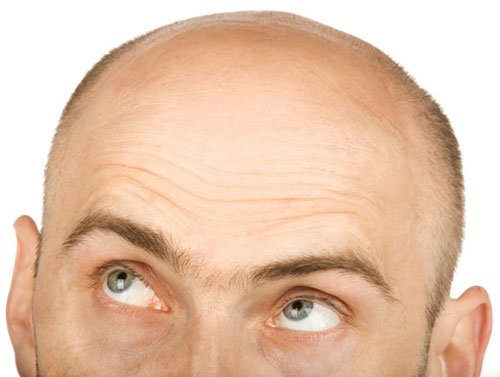
What is the cost of hair transplant?
The charges include surgeon’s fee, operation theatre’s fee, medicines needed during the procedure and the fee of the other doctor’s included in the team. The costs of hair transplant in Pakistan ranges between 50000 and 120000 rupees depending upon how many hairs are transplanted. If only a small session is performed the cost could be as low as 50000 rupees. But for a transplant with the highest number of hair the price can go up to rupees 120000/-. The exact cost can only be determined after looking at the donor area of the patient during initial consultation. If you could send us the front, top and side photos of your head/face, we will be glad to give you the approximate quote. You can e-mail pictures to [email protected]. or at [email protected]. Kindly call us at 0300-4770006 if you wish to make an appointment or need any further information.
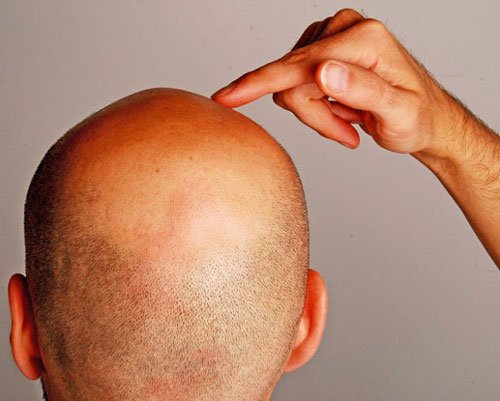
What happens after the surgery?
There is no pain or very little discomfort after the surgery and you can resume your daily activities after the surgery. Patient goes home immediately after the surgery that normally takes 5 – 7 hours to perform if done appropriately with care. Some of the transplanted hairs fall within the first three weeks and then they start to grow in three months and continue to grow for the rest of life.
Why do the transplanted hairs not fall?
Even the baldest men do not become bald on the sides and back of the head. This is because the hair on the sides and the back of the head are genetically programmed “not to fall” when a male hormone called DHT (dihydrotestosterone) attacks on them. This is a normal hormone present in humans. Only the front/top hair in those who have a family history of baldness in the father or the mother side of the family, get the baldness, as in these individuals, the frontal hair will die in response to DHT hormone, sometime after puberty. Baldness can start at any age after puberty and for most men with a family history of baldness it can start as early as early 20’s and in very severe cases these individuals can become totally bald in their 30’s. Even in these individuals the back and sides of the scalp/ head will remain unaffected. So we take these resistant healthy hairs and transplant them on the front of the balding head. They keep on growing here for the rest of the life, as they would normally have done at their original place, i.e., back of the head.
Can these hairs be transplanted on any other part of the body where the hair is lost (e.g., in a scar after injury)?
Yes. These healthy hairs can be placed anywhere they are needed like in the beard and mustache area and so on.
Can the females get the hair transplant?
Absolutely yes. Those females who suffer from female pattern baldness i.e., a type of baldness that is caused by a hormone called as DHT. This is almost like male pattern baldness except that in females the frontal line is maintained (meaning the front rows of hair remain unaffected).Therefore, a female with this kind of baldness, decreased hair density or simply a scar can benefit from a hair transplant. Again, the root cause of Hair loss or reduction must be considered and corrected prior to hair transplantation. It simply means that a good dermatologist needs to look at your hair to rule out any hair diseases that may simply be cured with medicines without any surgical intervention.
Why choose us as your hair transplant surgeons.
We pride ourselves of having a hair transplant surgeon in Pakistan who has triple qualifications of being a skin specialist (dermatologist) as well as a medical and hair transplant specialist. This alone guarantees you to get the best hair transplant in Pakistan. You will get the correct diagnosis of the Hair loss in your particular case before we recommend that a hair transplant is needed. In most of the hair transplant clinics, the “hair transplant surgeon” only knows how to transplant hair. Neither does he know the reasons of Hair loss, nor does it interest him to offer you any other Hair loss treatment besides “hair transplant” because of commercial reasons. The honest fact is that there are many diseases in which hair transplant is not needed and hair fall or loss can be cured easily with medicines alone. Since these self proclaimed “hair transplant surgeons” do not know anything about hair diseases, they offer hair transplant to everyone. We do not recommend hair transplant to everyone who walks into the clinic —-a common scenario at many hair transplant clinics run by unethical or unqualified doctors.
Is there an advantage of getting the hair transplant surgery done by purely a “hair transplant surgeon”- who only specializes in hair transplant surgery?
No. You can not get a PhD degree without getting a masters degree. Can you? The same is the case in hair transplant surgery. One cannot become a fully qualified hair transplant surgeon without becoming a “hair specialist” first. The only branch of medicine that specifically deals with the hair and its diseases is called Dermatology. Dermatologists are the skin, hair and nail specialists, as the hair and nail actually are a part of the skin. In 1952, a dermatologist in New York City Dr. Norman Orantreich, invented the hair transplant. Since then Dermatologists have refined and progressed the art and science of hair transplant, more than any other single specialty. The most famous hair transplant specialists in the world are basically dermatologists who have further specialized in hair transplant surgery.
Is there a specialist called “hair transplant surgeon”?
No. This is all too often a case with less qualified doctors who claim to be “exclusively” hair transplant surgeons. A backdoor way, to put it more precisely. The truth is that they merely learnt hair transplant surgery without even learning the structure of hair, process of hair growth, hair diseases or any other treatment that may cure or correct Hair loss. In order to become a good hair transplant surgeon, one must possess an in-depth knowledge of the anatomy of hair, its growth, associated diseases and their treatments and this can only be done by first becoming a specialist in Dermatology, and thereafter seeking a specialization in skin and hair surgeries.
Beware of false advertising and claims:
False Claim: FUE and “No-Touch Technique” the best techniques?
Truth: Many small clinics misguide the patients about the benefit of a particular technique. Mostly it is due to the low quality training of the doctor who learnt to perform only one technique and started to market it as a “special technique”. These less qualified doctors know only one technique of hair transplant. For example when the hair is placed in the tiny holes made on the frontal bald area, it is gently held with a very very fine forceps and put in the right place. A technique called as “No-touch” is being advertised falsely as a “better technique” while no scientific study has ever shown its superiority. Actually, this technique does not require the doctor to be highly trained and can be performed by a less trained or newly trained doctor but it is not as accurate as placing the hair one by one with a highly skilled hand of your surgeon. So this technique is simple but does not produce natural and exceptionally good results. The more difficult techniques, which take more time to learn and require a highly skilled surgeon’s hand, produces remarkably better results. The automation like “No Touch Technique” can be faster to perform but can not give you the fine results. It is just like machine made vs., hand painted piece of art or a hand crafted jewelry or carpet.
Similarly a much-publicized technique of follicular unit extraction (FUE) is a good technique performed by us as well, but should be reserved for a particular patient. In this technique one follicular unit (a group of hair) is taken out using small equipment called as a punch (a cookie cutter like equipment) blindly cutting in the same direction as the hair (watch the 3-D movie of FUE). It can be seen that the punch can cut through the hair root mistakenly as the surgeon is passing it downward to dissect the hair from the surrounding skin. Fortunately, most of the hair follows the same direction underneath the hair as on the surface of the skin and thus it does not happen too often. This technique is useful to avoid a liner scar caused by the traditional approach but a large number of hairs as done in the mega sessions cannot be taken out efficiently. So FUE should be reserved for patients who need lesser number of grafts or who cannot afford to have a liner scar. Unfortunately, this good technique is publicized as a marketing trick to attract customers by many clinics in Pakistan. You, as a patient should understand that using only the FUE technique on every patient, without any specific reason, will get you less number of hair per session and many hair will be destroyed as mentioned above, no matter how good the surgeon is, as even the best surgeons’ eyes can not see the direction of the hair underneath the skin. Remember, every patient is different or unique and the technique should be tailored according to the needs of the patient. We perform different techniques as required by the patient. So be aware of all these gimmicks and have a happy hair transplant.
False claim: “We transplant more number of hairs than any other clinic in the world”
Truth: Most such clinics divide a single follicular unit into two units and charge you for two units where they should have charged you only for one unit. It is just like cutting one loaf of bread into two halves and then charging you for two loaves of bread. Similarly, when they say they transplant more, they simply are deceiving the patient, as they know you will never be able to count the number of transplanted hair afterwards. Have you ever tried counting your hair? It is difficult. Try counting your hair on a small portion of your scalp and you will know the truth. It is almost impossible to count the exact number even by doctors. Although most of the good clinics have small microscope like instruments to count the number of hair in a small area, for example in one centimeter, and then they multiply that number with the total area of the skin that will be taken out from the back of the head, it is not an extremely accurate count. Moreover, it is not the total number of hair that is “transplanted” that matters. It is the number of hair that ultimately grows that matters. It is like hiring a gardener to grow some plants in a lawn. One gardener claims that he will plant 100 plants in a 10 square feet area. The second gardener says he will only plant 50 in the same area as the 10 square feet area can only feed 50 plants. If we put the plants too close, they will not get enough food and many will die. Who would you believe? The gardener who is going to charge you for 100 plants or the one who will charge you for only 50 plants. This is exactly the same story with hair transplant. If hair is placed too close to each other, they may not get enough blood supply from the skin and will die. So you may get “more number” of transplanted hairs, but less will eventually grow. So do not be greedy, just trust your honest doctor. See how to choose the best doctor.



